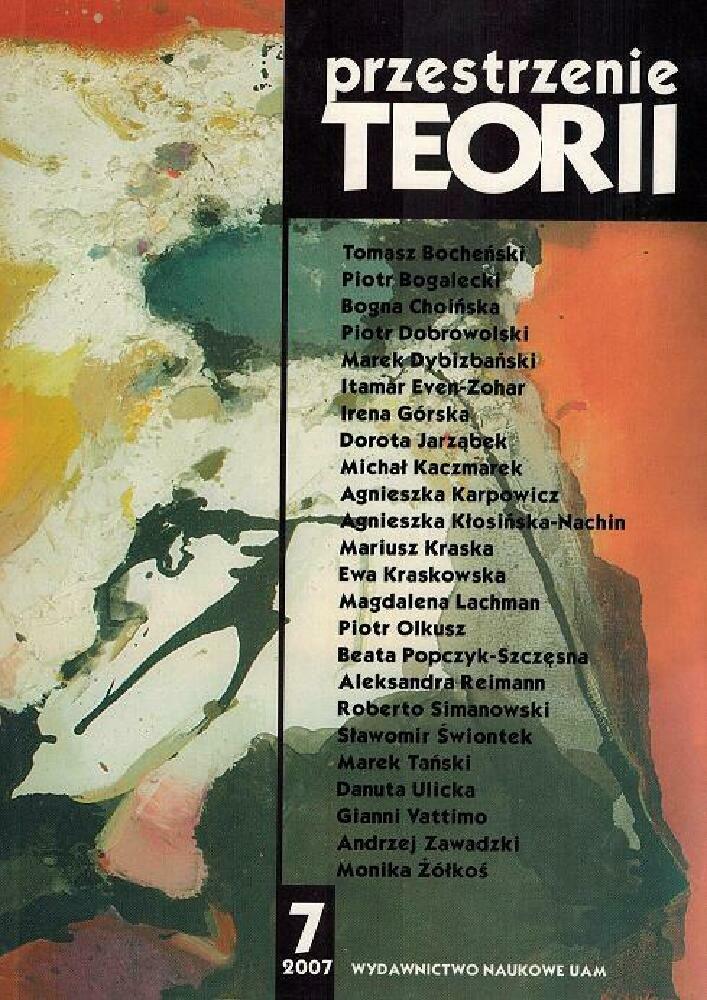Abstract
The article Miguel de Unamuno. Pomiędzy fikcją a rzeczywistością (Miguel de Unamuno. Between fiction and reality) is an author's metalepsy analysis, a phenomenon described by Gerard Cenette (Mśtalepse. De la figurę k la fiction, 2004), in three texts by Miguel de Unamuno: Vida de Don Quijote y Sancho (1905), Niebla (1914) and Cómo se hace una novela (1927). Author's metalepsy, defined as transgression of the limits of fiction by an author, existentional metalepsy (understood as a vision of the world based on doubt, concerning the status of reality) and reader's metalepsy (if he’s forced to transgression of the limits of fiction) are the inseparable parts of Unamuno's writing.License
Authors
Authors of texts accepted for publication in Przestrzenie Teorii are required to complete, sign and return to the editor's office the Agreement for granting a royalty-free license to works with a commitment to grant a CC sub-license.
Under the agreement, the authors of texts published in Przestrzenie Teorii grant the Adam Mickiewicz University in Poznań a non-exclusive, royalty-free license and authorize the use of Attribution-NonCommercial-NoDerivatives 4.0 International (CC BY-NC-ND 4.0) Creative Commons sub-license.
The authors retain the right to continue the free disposal of the work.
Users
Interested Internet users are entitled to use works published in Przestrzenie Teorii since 2015, for non-commercial purposes only, under the following conditions:
- attribution - obligation to provide, together with the distributed work, information about the authorship, title, source (link to the original work, DOI) and the license itself.
- no derivatives - the work must be preserved in its original form, without the author's consent it is not possible to distribute the modified work, such as translations, publications, etc.
Copyrights are reserved for all texts published before 2015.
Miscellaneous
Adam Mickiewicz University in Poznań retains the right to magazines as a whole (layout, graphic form, title, cover design, logo etc.).
